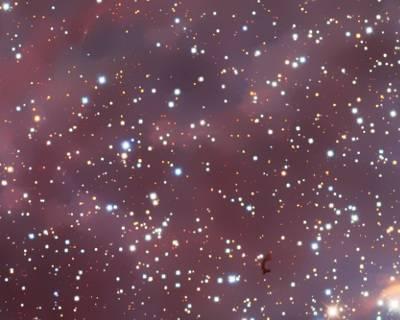| doctor | Chun-yu Yi |
| alias | akaTaicanggong |
| dynasty | Western Han, lived in 205 - 150 BC |
Chun-yu Yi, a renowned medical scholar in the early Western Han Dynasty, was from Linzi, Qi State (now Linzi, Zibo City, Shandong Province). He was born around 205 BC and died in 150 BC. He once served as the Taicanggong of Qi State, hence he was also known as "Taicanggong" or "Canggong". From a young age, he was fond of medicine and first studied under Gongsun (SP4) Guang. His profound understanding of medical prescriptions earned him the favor of his teacher, who praised him for having the demeanor of a "sage Confucian" and stated that he "would surely become a national craftsman". Chun-yu Yi, after receiving the "forbidden prescriptions" from Gongsun (SP4) Guang, further studied under Gongcheng Yangqing of the same region, mastering pulse books, Upper Classics, Lower Classics, Wuse Diagnosis, Qi Ke Techniques, Kuidu, and Pharmacology, among others. After three years of study, he became famous for his ability to predict life and death through diagnosis.
Chun-yu Yi was known for his upright and unyielding character, often traveling and practicing medicine anonymously. His refusal to treat certain powerful nobles who bullied others led to his false accusation and subsequent dispatch to Chang'an in the fourth year of Emperor Wen of Han (174 BC). Fortunately, his young daughter Tiying accompanied him and submitted a petition, stating her father's integrity and willingness to serve as a government slave to redeem his father's punishment. Moved by her filial piety, Emperor Wen spared Chun-yu Yi from punishment and even summoned him to inquire about his medical studies and practice. Sima Qian recorded his story in Shiji‧Bian Que Canggong Liezhuan, highlighting 25 medical cases, known as "diagnostic records", which are the earliest documented medical cases in China. Chun-yu Yi is thus recognized as the founder of documenting "medical cases" in Chinese medical history.
Chun-yu Yi respected his teachers Gongsun (SP4) Guang and Gongcheng Yangqing during his medical studies. After becoming a renowned physician, many sought his teachings. Chun-yu Yi had six disciples, to whom he imparted different medical techniques based on their strengths, such as teaching Song Yi color diagnosis, Gao Qi and Wang Yu meridian techniques and stone acupuncture, Feng Xin pharmacology, and Du Xin and Tang An meridian and Qi Ke techniques, making him an early example of master-disciple transmission in Chinese medicine.Chun-yu Yi, apart from the 25 diagnostic records, is historically noted to have authored Secrets of Life and Death in one volume and Decisive Secrets of Death in one volume, both of which are now lost. His academic thoughts, due to the scarcity of records and his extant works, are mainly reflected in Sima Qian's Shiji‧Bian Que Canggong Liezhuan.
- Chun-yu Yi emphasized the importance of medical records in treating diseases. Detailed records were kept for each patient, including their name, occupation, address, disease name, pulse manifestation, cause of illness, treatment status, as well as the progression and prognosis of the disease. This was referred to as "diagnostic records" at the time. Shiji﹒Bian Que Cang Biography records Chun-yu Yi's 25 cases of diagnostic records, documenting about 23 disease names, such as abscess, qi obstruction, hernial swelling, Rebing, wind-induced jaundice affecting the vessels, lung consumption jaundice, residual accumulation lumps, wind reversal, wind syncope, inguinal hernia, heat syncope, dental caries, failure to lactate, kidney impediment, morning lumps, bitter wind, male hernia, and damage to spleen qi, lung injury, etc. The diseases involved were mostly internal medicine, with some cases in surgery, gynecology, pediatrics, trauma, and oral medicine. The causes of illness were mostly attributed to sexual activity and alcohol consumption, as well as excessive labor leading to sweating, and external exposure to wind, cold, and dampness. The observation and analysis of the causes were quite accurate, such as the case of the dental caries of the middle official of Qi, which stated: "It was caused by wind, and by lying with the mouth open, eating without rinsing." This was very insightful. Among the 25 cases, 15 were cured, 10 were judged based on pulse manifestation to determine life or death, and there were 4 errors in post-recovery inference. This shows Chun-yu Yi's serious and faithful attitude towards medical record documentation, which had a significant impact on the importance later physicians placed on medical case records.
- Chun-yu Yi has rich experience in diagnostic methods. He is skilled in inspection and even more proficient in pulse diagnosis. In the medical records, there are multiple cases where accurate diagnoses were made through inspection of complexion. For example, in the case of treating the servant of the Prime Minister of Qi, Chun-yu Yi observed that the servant's complexion was "pale yellow, resembling the color of dead green," and diagnosed it as "Neiguan (PC6) disease," attributing the cause to "damage to spleen qi," with a poor prognosis, "likely to result in bloody diarrhea and death by summer." The following spring, the servant indeed "died of bloody diarrhea in April." Another example is the case of Song Jian's kidney impediment, which was also confirmed through "observing his complexion, the Taiyang (EX-HN5) area appeared dry." In terms of pulse diagnosis, he not only recorded nearly 20 single pulse manifestations, such as floating, sinking, wiry, tight, rapid, slippery, choppy, long, large, small, intermittent, full, weak, firm, even, drum-like, calm, and restless, most of which are still in use today, but also discussed combined pulse manifestations like large and rapid, large and restless, uneven and intermittent, deep, small, and weak, large and full, and hesitant and discontinuous. In terms of pulse theory, he discussed the absence of five zang-organs' qi, yin-yang interlocking, combined yin, triple yin pulsation, and non-declining pulse. Among the 25 medical records, 10 cases were entirely based on pulse manifestations to determine life and death, such as the case of Rebing, the chief of the Qi Central Imperial Palace, and the case of Sima Huifeng of Qi. Although these were chronic and severe illnesses, Chun-yu Yi correctly predicted based on pulse manifestations that the diseases were "treatable" and "still survivable." He also pointed out that medical practitioners "must carefully diagnose, establish standards, set rules, weigh and balance, combine complexion and pulse, differentiate exterior and interior, excess and deficiency, and the principles of compliance and opposition, considering the patient's movements and breathing, before making a diagnosis," emphasizing the need for careful and comprehensive analysis of pulse and complexion in diagnosis.
- In terms of disease treatment, Chun-yu Yi primarily used medications but was also skilled in acupuncture, moxibustion, and cold compresses. He could select different dosage forms such as decoctions, porridges, pills, powders, tinctures, gargles, and suppositories based on the nature of the disease. Notably, in the case of "the beauty of the King of Zichuan who could not lactate after childbirth," he had the patient "drink a pinch of lang medicine with wine, and she lactated immediately." Lang refers to henbane, which has analgesic and anesthetic effects. This is the earliest recorded use of henbane with wine as a sedative and anesthetic to aid childbirth. Chun-yu Yi also strongly opposed the trend of alchemy and stone ingestion that emerged during the Qin and Han periods. For example, in the medical records, it is recorded that "the royal physician of Qi, Sui, became ill after refining and ingesting the five minerals." Chun-yu Yi diagnosed him and, based on medical theory, responsibly pointed out the dangers of refining and ingesting the five minerals, warning him not to take the five mineral powder casually. However, Sui did not heed Chun-yu Yi's advice and eventually died from a carbuncle. Chun-yu Yi can be considered a pioneer in opposing the ingestion of minerals for immortality in the history of Chinese medicine.





